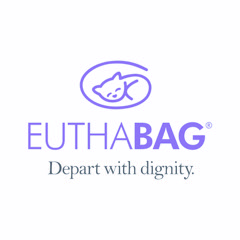We all know euthanasia is a necessary part of veterinary medicine. It is an ever present procedure to be called upon when suffering is assured and when the burden of care outweighs our resources (physical, mental, financial, spiritual). As Dr. Frank McMillan once spoke about, administering euthanasia solution is the ultimate palliative treatment that eliminates all physical and emotional suffering for the animal in question; the side effect is the animal has to die. A harsh truth, but one that resonates. As it turns out, euthanasia is so common, it’s considered by some experts to be the second most common procedure in vet med. Here’s why.
How a pet will die has largely been left up to pet owners with guidance from veterinarians. While the exact number of pets euthanized each year around the world is unknown, we do know here in the US, more pets arrive at pet crematories and cemeteries from veterinary hospitals than are brought in by pet owners. This means more pets are dying at hospitals than at home. In the hospital setting, pets can die naturally due to age, terminal disease, or during surgery for example, but this is rare. Euthanasia is the number one reason pets die at the hospital.
The reason it is such a common procedure is based on 2 main factors. Number one, death is a guarantee for all pets. Everyone will die at some point, with or without assistance. Many pets will require no medical treatment throughout their lives, meaning the one procedure they do need (euthanasia) will be the final, and only, one. Choosing euthanasia is another guarantee that death can be controlled through ideal timing, who wants to be present, and how the pet can be honored. Number two, and an equally large reason in my experience is how watching a pet die through illness and old age can be very taxing for pet owners. The burden of care can be overwhelming, not to mention the worry that comes from a potential crisis event or unacceptable pain. Euthanasia as we said from the start, is the ultimate palliative treatment to prevent further suffering.
Animal hospice has an effect on euthanasia choices too. Pet owners are usually better prepared to make educated decisions for or against euthanasia AND through impressive palliative medical support, pet owners have a safer choice to allow their pet to pass naturally, meaning euthanasia may not need to be chosen at all. While hospice does impact when and how often euthanasia is chosen, it is unlikely to unseat euthanasia from the common-procedures lineup.
Today, euthanasia remains a popular choice for end of life. It’s high demand requires veterinary professionals to be euthanasia ready; well educated through groups like the Companion Animal Euthanasia Training Academy (CAETA), and emotionally sound for such demanding work. With generous attention given to best practices, this common procedure is sure to continue connecting veterinarians and pet owners together for years to come.





